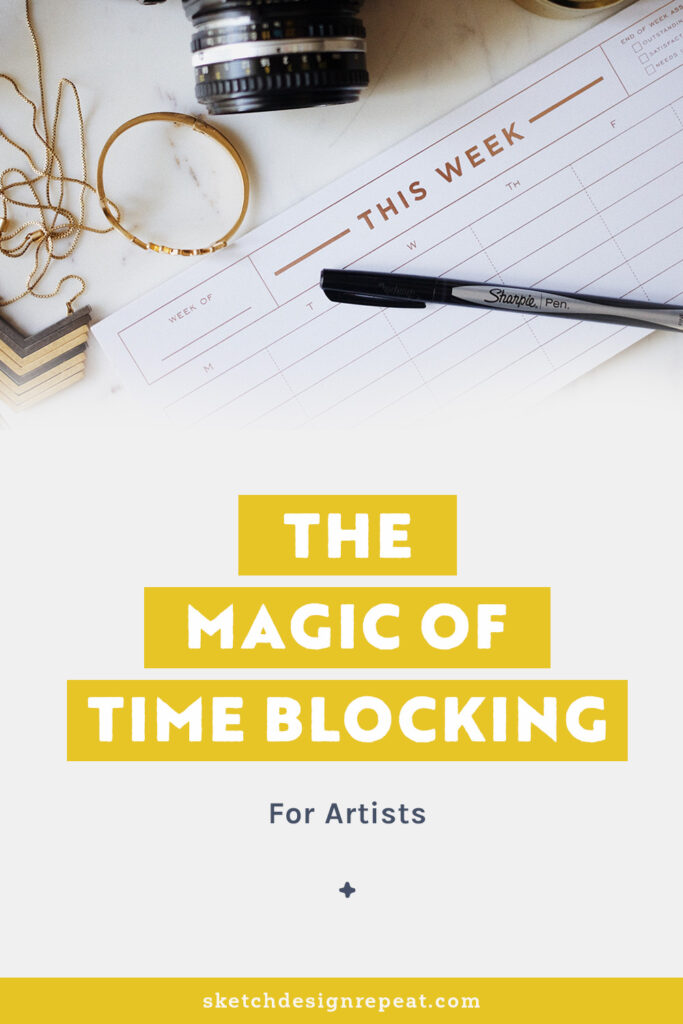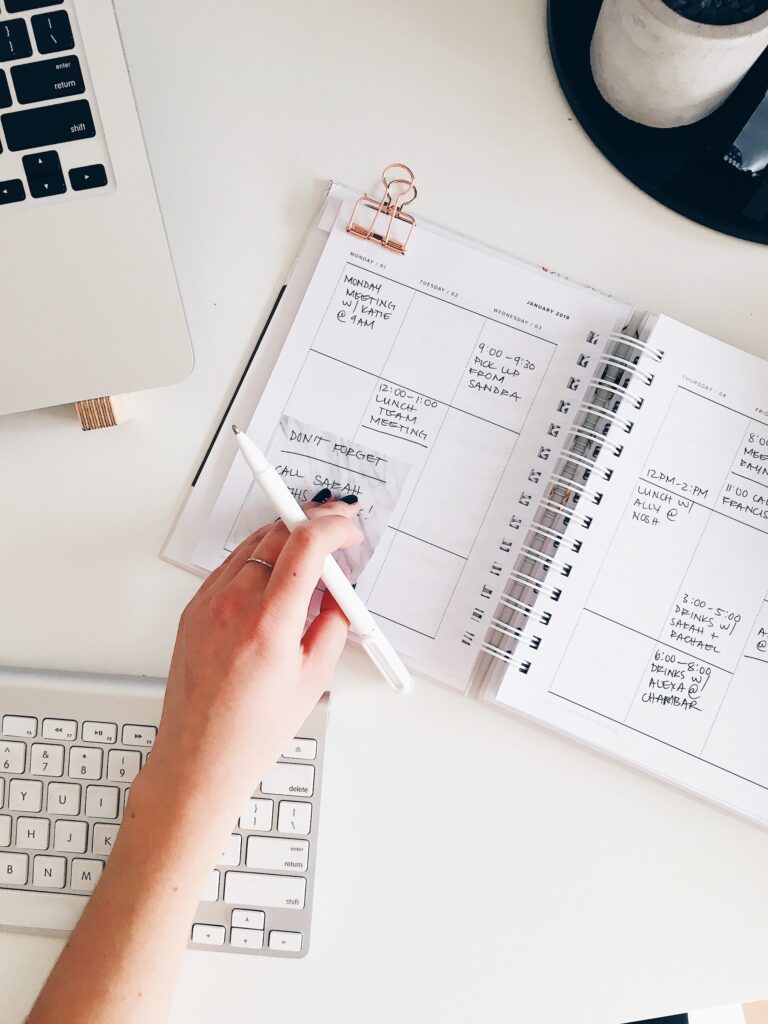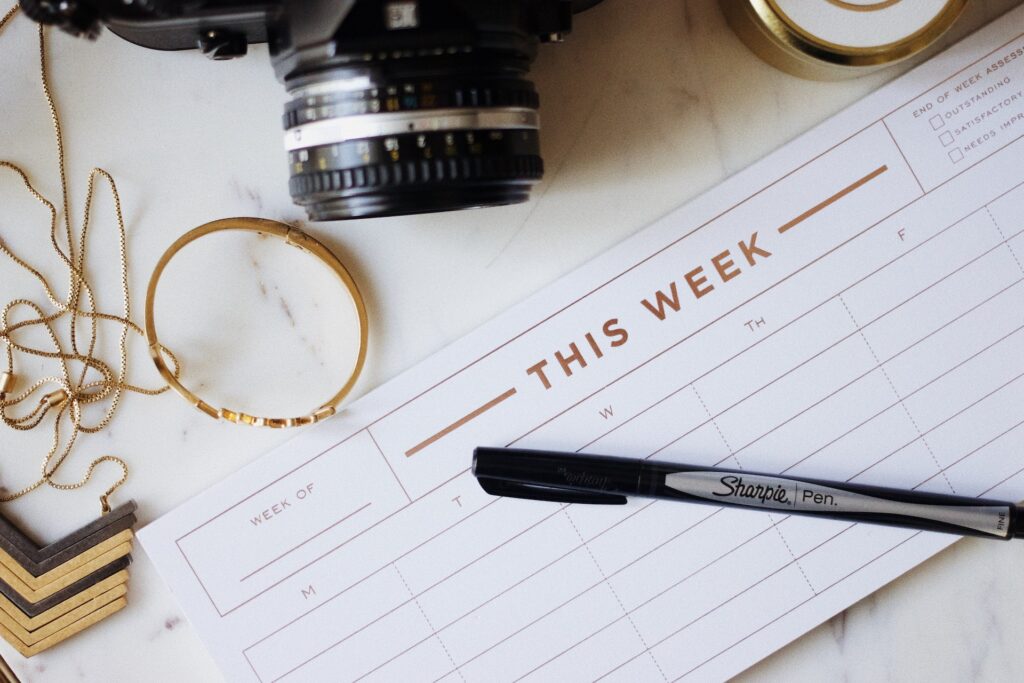When I started freelance illustrating, I was overwhelmed with all the things I needed to do. The to-do list just kept growing and the number of different tasks on there was overwhelming. I was setting impossible daily goals and ended up disappointing myself when I couldn’t meet them. On top of that, there was no time left for personal projects. How do you use your time effectively as an artist? And how do we find the time for self-initiated work and creativity? I found a way to make it work for me by time blocking my schedule.

What Is Time Blocking?
Time blocking means dividing your day into blocks of time. Each block is dedicated to accomplishing a task, or group of tasks, from 5 minutes to a few hours at a time. Instead of keeping a to-do list of things you’ll get to as you’re able, you’ll start each day with a schedule that lays out what you’ll work on and when. So how does time blocking help you as an artist?

Managing Your Time VS. The To-Do List
Time management is the ability to use your time effectively or productively. Working with a time management system (like time blocking) means it’s much easier to set realistic expectations for yourself. It requires insight to recognize which projects are best done when, and anticipate how long tasks take you. If you organize your tasks well, it’ll seem like you have more time in your day, because you are using your limited hours more effectively. This is vital when you’re working for yourself because you’re in charge of your hours and need to plan constantly. The more you get to know what works best for you, the easier it’ll be to schedule your tasks well.
Setting Realistic Goals
As someone who often believes a day consists of 36 hours, I set too many expectations for what I can get done in a day. I need a reminder that doing as many tasks as possible back-to-back isn’t a healthy way to keep working. Practicing time blocking helps me to be realistic about my goals and serves as a reminder about what I can get done.

When you figure out how much you can productively do in a day, you can also create space and schedule breaks. With a never-ending to-do list, it’s easy to get stuck in a loop of constantly trying to tick things off the list without taking adequate breaks. When you track your time and schedule those breaks, you’ll be far less likely to exhaust yourself. You no longer have to find small pockets of time wherever you can. Instead, your schedule will tell you when to step away from your work and when to show up. Plus, if you have time left after a task; reward yourself by doing nothing. You’ve done the task more efficiently than you anticipated, so take a break! Rewarding yourself is way more effective than punishing yourself by taking on even more work.
Motivating Yourself
People often make the mistake of thinking you need to be in a ‘creative flow’ to make new things or start a project, and find it difficult to start when they aren’t feeling motivated. But scheduling a task for a certain block of time and just showing up is the best thing you can do to combat procrastinating. Just show up and start, whether you’re feeling up for the task or not. Most likely you’ll find that once you start it’s easier to keep going. Often, motivation comes after you start, not before.
Setting a time for something also instills a sense of urgency. Rather than feeling like you have a lot of time, you know it is limited and there can’t be any distractions. You have to use that block to make as much progress on that task as possible. Once that time is over, you have to step away and take a break (this is precisely why the ‘Pomodoro technique’ works so well for so many people).

Limiting Your Choices
If it’s overwhelming to start on a big task, it helps to simplify your path. Often, we need to set limitations to be able to get started and think creatively. Instead of looking at a long to-do list, limit the choices you give yourself. For example, promise yourself to work on it for just 10 minutes today. Schedule that daily and just keep showing up. Even though you’re only doing it for 10 minutes, you’re becoming the type of person who is doing this task every day. You’re creating consistency, day after day. The only thing you need to master is showing up, and keep doing so.
This consistency is the first step to building new habits that can become part of your routine by blocking these tasks into your calendar. You have to start somewhere, but starting small is easier. Once you have established this habit, you can turn those 10 minutes into 20 minutes, or 2 hours. By consistently showing up you are building momentum, which is incredibly powerful. As artists, we often just need to start on a creation process rather than wait for inspiration to kick in. Just a few minutes a day of doing a task is far superior to thinking about doing it.
Related Article: Make Your Design Time More Productive
Time Blocking Your Schedule
Now that we’ve been over all the advantages of time blocking, let’s put this into action:
Step 1: List Your Tasks
Write down a list of everything you need and want to get done during the week. (I like to review my schedule weekly, but feel free to make this a daily schedule!) This is our to-do list. Start with what is most important or pressing: meetings, difficult and urgent tasks, deadlines, etc. My weeks often contain the same type of tasks or things that need to be done, so I like to combine a lot of tasks into groups. Everything that needs to be done will fit into one of these categories. An example of recurring tasks in a week:
Step 2: Timing
Next, estimate how long each of these tasks will take (in my case, weekly):
- Client work – 14h
- Editing – 7h
- Studio work – 6h
- Marketing – 3h
- Writing – 3h
- Admin – 5h
It’s completely normal to not know exactly how long these tasks will take. The more you practice time blocking, the more confident you’ll feel in estimating and scheduling tasks.
Step 3: Blocking
Next, we need to schedule all of those tasks as if they are appointments with a clear start and end time, and put this into a calendar (I like using Google Calendar, but you can also use a time management app or physical journal). Categories of tasks can be chopped up into smaller blocks during the week. How long those blocks last is up to you and depends on how long you think you can be productive. Find out what works best for you; be aware of your most productive times of the day, and know when you need to take breaks:
Monday
- 9AM – 10AM: Admin
- 10AM – 11AM: Marketing
- 11AM – 1 PM: Writing
- 1PM – 2PM: Lunch
- 2PM – 3PM: Meeting
- 4PM – 6PM: Client work
Step 4: Following Through
Follow your time-blocking schedule by checking in daily. Use a timer if need be, to make sure you stick to your schedule. Life doesn’t always go according to plan, so if something doesn’t work, be ready to make changes. Every month, I like to revise my calendar and tasks and see what worked, and what didn’t, and adjust where necessary.
A Few More Tips for Time Blocking
- Don’t judge yourself or hold yourself to unreasonable standards. There’s only so much you can do in a day! The point of time blocking is to set realistic expectations for ourselves.
- Multitasking sometimes feels productive, but you get less done on each project than if you had focused on just one thing, and you’re less likely to make mistakes. Dedicate your block of time to just that one activity.
- Don’t underestimate the momentum and the confidence boost you can get from a couple of quick wins. Batch a few smaller tasks into one block of time at the beginning of the day that are easy to do (send emails, check messages, do chores) to start the day right.
We all have the same number of hours in the day, but how we make those work best for our schedule and our creativity is something that takes time to figure out. Time blocking will help you improve your productivity and efficiency, and help you build a routine that works for you. Adapt your schedule to your needs so you can focus on your creativity.

Written by Claire van Kuijck
Website: clairemakesthings.es
Instagram: @claire.makesthings
Claire, of Claire Makes Things, is an illustrator and teacher from the Netherlands, based in Madrid, Spain. She creates murals, chalkboard designs, greeting card designs and more, and teaches illustration and graphic design. She loves all things retro, cocktails, and riding her motorbike.